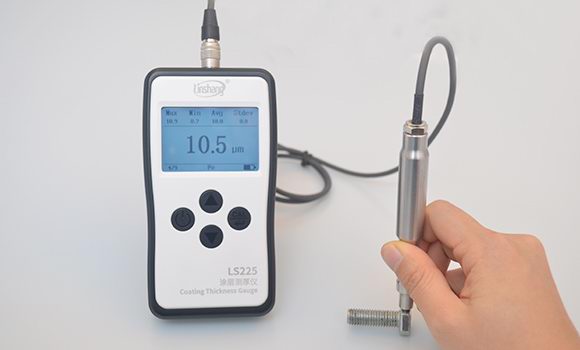Electroplated Layer Function and Thickness Measurement
The thickness measurement of the electroplated layer is an indispensable part of the quality inspection in the surface treatment industry. Too thick or insufficient electroplated layer will affect the quality of the finished product. The plating thickness meter can quickly and accurately detect the plating thickness and control the quality of the finished product to improve the durability and aesthetics of the plating.
Electroplating is a method to bond the metal ions in the solution to the metal substrate by electrode position to improve the service life of the metal parts and beautify the appearance. It is commonly used in the metal surface treatment industry, various auto parts, electrical appliances, kitchenware, plumbing hardware is plated with metal. In addition, various vehicles and even aerospace products and machine tools used in factories will also use plating to improve durability. By using a professional plating thickness meter to detect the plating thickness, it can effectively avoid the phenomenon that the plating is too thick or insufficient and ensure the quality of the plating.
I. What are the functions of the plating layer?
The plating thickness generally needs to be determined according to the chemical composition of the plating, application and working environment. According to the application and working environment of the plating, the porosity can be reduced by electroplating to improve the corrosion resistance, wear resistance, high temperature resistance, impact resistance, lubricity, hardness, weldability and conductivity of the plating.
II. What is the effect of too thick or insufficient plating layer?
During the electroplating process, the plating thickness should match the overall plating.
1. The effect of too thick plating
An excessively thick plating may cause insufficient adhesion on the surface of the plated part, resulting in the shedding of the plating; it may also cause high internal stress, resulting in cracking of the plating; uneven thickness will damage the appearance and may require rework and increase cost in serious cases.
2. The effect of insufficient plating thickness
Insufficient plating is likely to cause voids and affect the appearance. It may not provide the protection and efficacy that the metal substrate should have. In simple terms, it will seriously affect the plating process and the quality of the finished product.
III. How to measure the plating layer thickness?
The plating layer thickness can be measured using a professional plating thickness meter. Unlike ordinary plating, the plating thickness is often thin, so the accuracy requirements of the plating thickness meter are also very high. Linshang high-precision plating thickness meter is used to measure the plating thickness on ferromagnetic metal substrates. The following picture shows the actual measurement scene of several plating thickness meters.

IV. LS225+F500 coating thickness gauge
Adopt ultra-small probe and provide optional test fixture
Suitable for plating measurement of small workpieces such as screws, bolts and various shaped materials
It can also accurately measure the ultra-thin plating thickness below 10μm
- High precision coating thickness gauge for used car
- Automotive paint protection films coating thickness gauge
- Plating Thickness Measuring Instrument for Detecting Anti-corrosion Coating
- Linshang LS220, LS191, LS160A– Necessary for Car Cover Inspection
- Coating Thickness Gauge for Second Hand Vehicle
- Zero Adjustment Step of Coating Thickness Gauge
